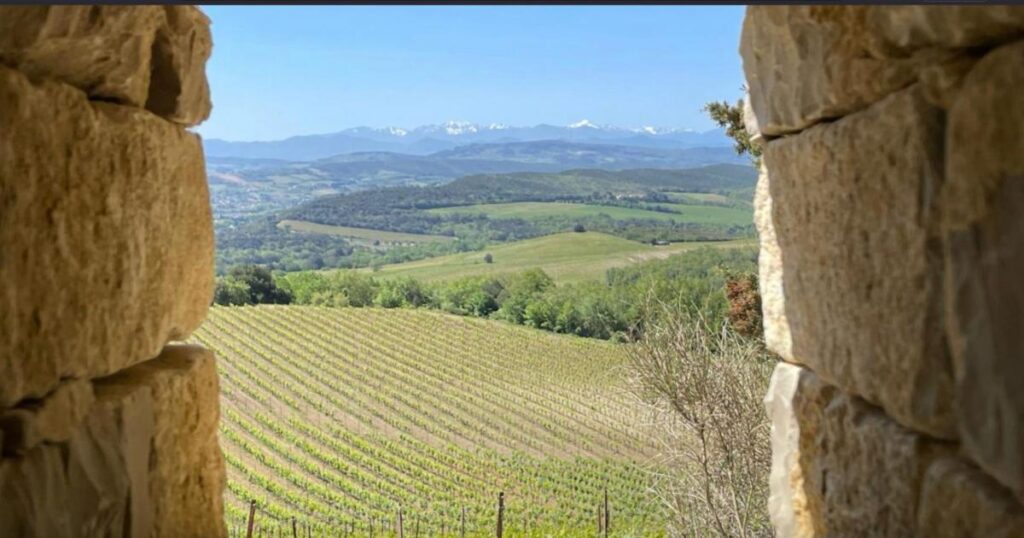And when the bubbles themselves are the birthday babe, the celebration is even happier.
We’re a little late to toast this particular birthday, as France’s crémant appellation was 50 years old last month (October).
But with the big bubbles season fast approaching, there’s no better moment to look back and forward at wines which are so good, and such excellent value.

Crémant is essentially the little sibling of Champagne.
The method of creating the bubbles – by second fermentation in bottle – is the same, and quite often some of the same grape varieties go into the blend.
But, of course, the highly protected word Champagne is banned when it comes to marketing crémant.
This form of sparkling wine traces its origins way back before 1975 when the first two crémant appellations, Loire and Bourgogne, were created, rapidly followed by Alsace (though it took another decade before the name crémant was approved).
Some 150 years earlier, Loire winemaker Jean Baptiste Ackerman was selling similarly made fizz, and in the mid-16th century, the innovative monks of Saint-Hilaire in the Limoux hills in southern France were bubbly innovators, though with a simpler technique.
Now, eight regions of France make crémant: beyond those first big three, there are Bordeaux, Die, Jura, Limoux, and the most recent addition, Savoie.
There are also crémants from Luxembourg, Belgium, Germany, even Italy.
It’s big business – almost 115 million bottles a year are produced in France.
And sales in the UK are burgeoning.
For all the French regions, the rules are similarly strict, going beyond the second-fermentation-in-bottle production method.
Grapes have to be hand harvested, pressing is controlled, as are levels of sulphur and sugar, and once made, the wine must rest on its lees for at least nine months.
The bubbles are a little less forceful than in Champagne, though still enough to cause occasional explosive echoing as cellared bottles break during storage, as anyone old enough to remember the wonderful Fat Man on a Bicycle Radio 4 series by Muswell Hill’s Tom Vernon will know.
There are rosés, but whites predominate, their individuality due to both place and distinctive grape varieties.
Let’s go from biggest producer to smallest, concentrating on whites.
Crémant d’Alsace notably features pinot blanc, pinot gris, and riesling in scented and seriously pleasurable examples.

Towards the top of the price scale, but still fine value, is Domaine Boxler 2020 (£25, thewinesociety.com).
In the Loire Valley, chenin blanc is particularly important, alongside cabernet franc, and there’s a broad, easily available choice.
One of my favourites is from small organic grower Domaine de Bois Mozé (£18, vintageroots.co.uk).

Elegant, delicious wines, both crémant and the similarly made Saumur, come from Bouvet Ladubay (Majestic, from £10.50 mix-six).
Bourgogne concentrates on the big two champagne grapes, chardonnay and pinot noir, to give citrussy freshness and a touch of brioche.
M&S Classics No 12 (£12) is a happy introduction.
Crémant de Bordeaux focuses on sauvignon blanc and semillon, and the best have long-lingering flavour.

Chateau Bauduc’s extra-long-lees-aged Blanc de Blancs 2021 is splendid (£99 case of six, bauduc.com).
Limoux’s signature grapes are chenin blanc and mauzac, with delightful freshness from high vineyards.
Famille Antech makes many tempting wines – try Cuvée Eugenie 2023 (£14.50, thewinesociety.com), Mademoiselle Marguerite (£12.50 mix-six, Majestic) or Berry Bros & Rudd’s own label by Antech (£15, bbr.com).
There’s plenty of character too in Cuvée Royale (£14, Waitrose) and Roche Lacour (£16, laithwaites.co.uk)
Jura’s crémants are light and elegant, from chardonnay, pinot noir and local trousseau grown at high altitude, flower-scented with citrus and more.
Aldi has long provided a keenly priced introduction (£11).
Savoie’s crémants, from altesse and jacquère, are the essence of the Alps – and are mostly consumed there.
Among rare UK-available bottles are Philippe Grisard Envol (£28.80, alpinewines.co.uk), or Domaine Leon Boesch (£28.75, thewhiskyexchange.com).
Finally, the smallest: Die’s producers blend clairette with smaller quantities of aligoté and muscat.
The results are pale with notes of apple and green fruits – try organic pioneer Domaine Achard-Vincent (£21.50, yapp.co.uk).
To end, a very brief hop back home for two superbly mature English sparkling wines, rich, delicious and brilliant value: M&S Collection Hattingley Valley Brut 2018 (£30) and The Society’s Exhibition Blanc de Blancs 2018 from Ridgeview (£28.80, thewinesociety.com).
And here’s a final recommendation.
If you’d like to learn more about fizz worldwide, Essi Avellan, a Master of Wine, has written an admirably complete yet concise guide for the International Food and Wine Society.
Copies cost £10 including postage from iwfs.org.
- Liz Sagues is a committee member and events co-organiser at the Circle of Wine Writers and author of A Celebration of English Wine (Robert Hale, 2018) and Sussex by the Glass (Tanwood Press, 2021)




